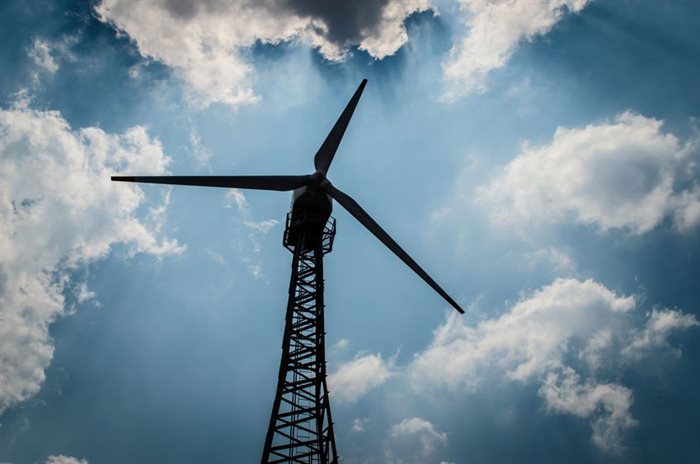






However, President Ramaphosa’s recent landmark announcement to increase the electricity generation threshold for private energy producers from 1 to 100 megawatts (MW) could signal a new dawn for South Africa.
This announcement enables private producers to generate up to 100MW of power capacity without needing to obtain a licence from the National Energy Regulator of South Africa (Nersa). To put this into perspective: 1MW is enough to power a small shopping centre, 10MW can easily power a mine, and 100MW can provide enough electricity for around 3,000 homes.
The 100MW rule change will significantly reduce red tape for many independent power producers (IPP) and could mean increased privatisation of electricity generation in South Africa. It is definitely a gamechanger for South Africa’s energy industry, businesses and everyday South Africans.
If private producers take advantage of the opportunities that this exemption will introduce, we could potentially see a reduction in blackouts and strain on the national grid. But, the greatest impact will likely be seen in its facilitation of the development and growth of South Africa’s renewable energy industry and in helping to move the needle towards the establishment of a more environmentally friendly country.
South Africa has the potential to become a global leader in renewable energy generation due to the country’s geographical position, available natural resources, and access to both domestic and external expertise.
The country has a wealth of large open spaces available for the construction of power generator plants, while an average of 2,500 hours of sunshine per year and radiation levels make it an ideal fit for solar power. Additionally, the country’s total wind power potential is estimated at 6,700 gigawatts - on par to compete with solar potential.
Europe and Japan are rapidly developing green hydrogen and green ammonia technology and are promoting green hydrogen and green ammonia as future sources of fuel to replace, or at least significantly reduce reliance on, oil and gas as fuel sources. The market for renewable energy power generation has huge potential growth in line with the move towards green hydrogen and ammonia. The northern hemisphere is not well endowed with sunshine and countries such as South Africa have been identified as being very well placed as a major exporter of green hydrogen and ammonia using solar energy to produce them. The significant potential of green hydrogen and ammonia has already been recognised by the South African government with it being on the radar of the Ministries of Higher Education; Science and Technology; and of Trade, Industry and Competition, which are engaging with European markets in this regard. Most importantly, I understand this is on the radar of the Presidential Infrastructure Co-ordinating Commission.
The 100MW self-generation threshold has the ability to act as a catalyst by enabling a significant increase in the establishment of renewable power plants across the country. In turn, it could allow the country to position itself as a forerunner in the manufacturing of renewable inputs such as solar panels and wind turbines, bolstering the South African Renewable Energy Masterplan (SAREM) which is currently being drafted with the SAREM scheduled to be endorsed ahead of the conference of the upcoming COP26 climate talks to be held in Scotland in November. We hope that the potential production and export of green hydrogen and ammonia will be properly considered in the finalisation of the SAREM.
As a result, skills and expertise capacity in the local industry would be built up, boosting employment, and local science and research capabilities in renewable and green fuel technologies would be developed.
The country’s domestic electricity generation capacity currently stands at 58,095MW, with coal accounting for 80% of the national energy mix while renewable energy only accounts for 10%. This reliance on coal in what is an energy-intensive economy has resulted in the rise of South Africa’s carbon emissions over the past few years, despite pledges to adopt more ambitious climate action.
The country currently sits at the top of Africa’s big carbon emitters, with a record 471.6 million metric tons of carbon emitted in 2019. The environmental organisation Greenpeace also notes that South Africa’s coal-fired plants emit 10 times more nitrogen oxide than China and Japan.
Growth in the number of renewable energy plants will ensure a more sustainable and diverse energy mix, accelerating efforts to meet climate change and carbon commitments to cut greenhouse gas emissions by 28% before 2030.
Energy demand in South Africa is on the rise. The 100MW exemption opens up new opportunities to close the gap between capacity and demand, but there will be a need for significant investments into the industry to realise the future that this rule change could make possible.
As it will likely take a minimum of two years to build a plant that can generate 100MW of electricity, the private sector must grab this opportunity with both hands and gear up to embark on sizable renewable power projects in the forthcoming years. However, it’s important to note that we will probably only start to see the benefits in doing so in the next decade or so as the market reforms currently underway need to reach their end conclusion and grid capacity constraints need to be resolved.
South Africa is currently sitting in the era between industrialisation and the fourth industrial revolution, and energy has a critical role to play in the country’s transformation. If IPPs can effectively take advantage of the doors that the 100MW announcement has opened, we could not only overcome our power challenges as a country, but reimagine the energy industry in South Africa and the wider world within the next decade.